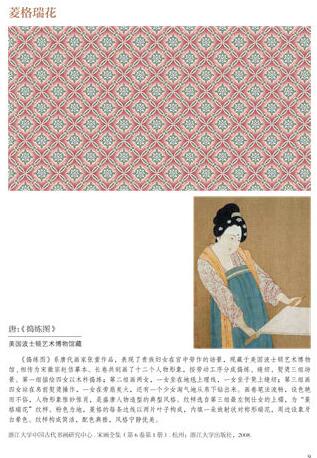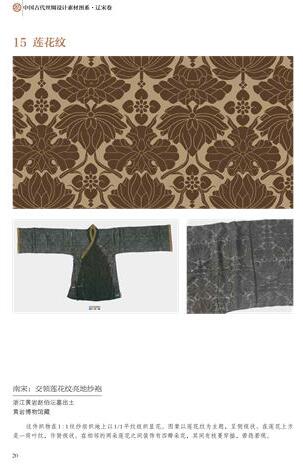In 10 volumes, 5,000 years of pure silk
A four-year-long national project has produced a magisterial work that celebrates a great heritage, Mei Jia reports.
Silk is the most important creation from ancient China, one that has been passed down over 5,000 years, says Zhao Feng, a silk expert and director of the National Silk Museum in Hangzhou, Zhejiang province.
"To protect and preserve the relics we can try to be comprehensive with new ways of sourcing and reutilizing for modern-day use."
Zhao has studied silk for almost 40 years, so any new discoveries, no matter how trivial, are sure to delight him.
In 2013 Zhao set out with a team of scholars from more than 10 universities on a national project to collect silk patterns, and these are brought together in the 10-volume Ornamental Patterns from Ancient Chinese Textiles, published by Zhejiang University Press, which was unveiled at the Beijing International Book Fair over the past week.

Ornamental patterns from ancient Chinese textiles. [Photo provided to China Daily]
"To choose the patterns that are highly representative we went to the actual historical pieces, and they are scattered in different places, which made things more difficult," Zhao said.
The series is authoritative and replete with explanations on the origin of silk pieces as well as anecdotes.
The editors say: "It shows the beauty of ancient silk design based on restoration through modern technologies and professional interpretation of first-class experts, and presents traditional Chinese crafts such as weaving, printing, dyeing and embroidery."
The 10 volumes also deal with silk from dynasties stretching from the Han (206 BC-AD 24) to the Yuan (1271-1368) embroidered accessories, mounting silk (like in mounting a picture, framing something, or binding a book), ethnic clothing, monochrome woven silks, polychrome silks, velvets and carpets and painted images.
Yang Zhishui, a culture expert, said the series provides a grand database from various perspectives and offers not only a history of silk and of arts, but also information about ancient Chinese society and literature.

Ornamental patterns from ancient Chinese textiles. [Photo provided to China Daily]
The books recount how the Qin and Han dynasties valued Taoism, so many cloud and cloud-like animals featured in patterns, and how Western images such as peacocks, elephants and camels began to appear on Chinese silk between the fifth century and the ninth century.
"Patterns travel," said Lu Jiande, an expert with the Chinese Academy of Social Sciences.
"Patterns show the interaction of different civilizations and their fluidity, and some very foreign design we found from the ancient times were actually very native ones."
That probably explains why Russian, French and Arabic publishers are keen to publish translations of the series.
The sericulture and silk artisanship of China are on the UNESCO World Heritage List, and President Xi Jinping is quoted as saying in May last year: "The ancient silk routes, spanning thousands of kilometers and years, embody the spirit of peace and collaboration, openness and inclusiveness, mutual learning and mutual benefit. The Silk Road spirit has become a great heritage of human civilization."
The seriousness with which Zhao and his team went about their task is evident throughout the 10 volumes.
"The pictures are all scanned and restored as vector graphics, which means they will be easy for any designers to pick up and redesign," Zhao says.
"These standard Chinese patterns from our ancestors will increase our cultural creativity. At least we won't be looking at the wrong patterns for reference."

